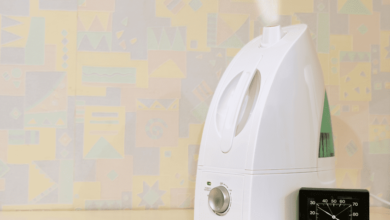A Guide to Cleaning Your Home Driveway Drainage

If you have a driveway, then you’ve likely noticed that the area around your curb drain can get pretty clogged. This happens because the water flows down the center of your drive and collects debris as it goes. To keep this from happening and keep water flowing smoothly through your drainage system, it’s important to clean out the leaves, pine needles, and other debris from this area regularly. Below are some tips to follow:
Benefits of curb drains
A driveway drainage system, or curb drain, is a type of drainage system that runs down the center of your driveway and collects water from the paved portion of the drive. Here are theirs benefits:
Protecting your home from rainwater runoff
If you live in a rainy climate, this will be a welcome feature. Water tends to pool up on your driveway and run into cracks between pavers. A curb drain can help divert this water away from your home’s foundation by collecting it in a catch basin that leads to an underground pipe system (such as a storm sewer). This prevents moisture accumulation and helps prevent damage over time—especially if you have wooden decking or other materials close by! It also keeps harmful substances such as salt from damaging concrete slabs beneath driveways when salting roads during storms (you’ll see these along highways).
Preventing ponding when the snow melts after winter thaw periods
When spring arrives and snow begins melting off roofs nearby yours will melt into puddles at their edges before draining entirely away so long as there’s no obstruction. This may cause problems later on down the road if left unchecked because the waterlogged ground could lead eventually create sinkholes underneath nearby buildings leading eventually destroying them under pressure exerted by heavy rains coming later on down the road when they hit harder than usual due to high levels being released earlier than normal due to unusually warm temperatures brought upon us during this season.
Getting ready to clean your drain
Firstly, you need to get the right tools. You have to have your hose and nozzle ready to go. Before cleaning, make sure you have everything you need; otherwise, you’re going to waste precious time looking for things as you work.
Secondly, check if the weather is good. If it’s raining outside, don’t do this project. Rainwater can cause damage if it enters your home’s drainage system and floods your basement or garage flooring. If possible, wait until after a storm has passed before starting this job so that any debris and water that may be clogging up your drain flows away from where it should be flowing (away from your home).
Finally, make sure there’s enough time available for cleanup and drying before nightfall so that nobody slips on wet pavement when walking around outside after dark.
How to clean your curb drain
Cleaning a curb drain is a relatively simple process. If you have the right tools and it’s not blocked by leaves and other debris, it should take less than half an hour.
To clean your driveway drain, you’ll need a garden hose, coarse sand, and a rake. You may also want to have an old towel or two handles for drying off the debris you’ve removed from the drain.
Once you’ve gathered all of your supplies, make sure that your hose is turned on full blast, and then direct the water into the drain area through a garden hose attachment placed at its end (if there’s not one already attached). The purpose here is not only to clear out any debris stacked up inside but also to give yourself something resembling depth perception.
When it comes time for to another step, raking out any remaining clumps with your hand rake, make sure your hose has a nozzle on it so you can vary the pressure of the water as needed. How much pressure you need to use depends on the type of debris you’re cleaning. If you’re using a hosting nozzle, start with a gentle spray and then increase the pressure if needed. Gentle sprays are best for soft soil or other materials that don’t require much force and can be washed away easily by water.
You should clean your curb drain at least once per year, or anytime you notice a problem. If there is a lot of debris in your curb drain, this will cause problems for you later on. When cleaning your curb drains it helps to use some sort of solution with bleach and water in equal parts to help kill bacteria that may be present in the area where debris accumulates inside of the drain.
To clean out any debris from inside of your curb drain all you need is a small brush and some old rags. You can also use a vacuum if available but try not to overdo it because doing so could cause damage to yourself or others around you.
When cleaning outside make sure not to use any chemicals because this could possibly harm plants nearby as well as other animals living near by including humans.
Conclusion
Take care of your curb drains by making sure they are cleaned on a regular basis and don’t clog with leaves during the fall months. You can even use them to help prevent flooding in your yard.




